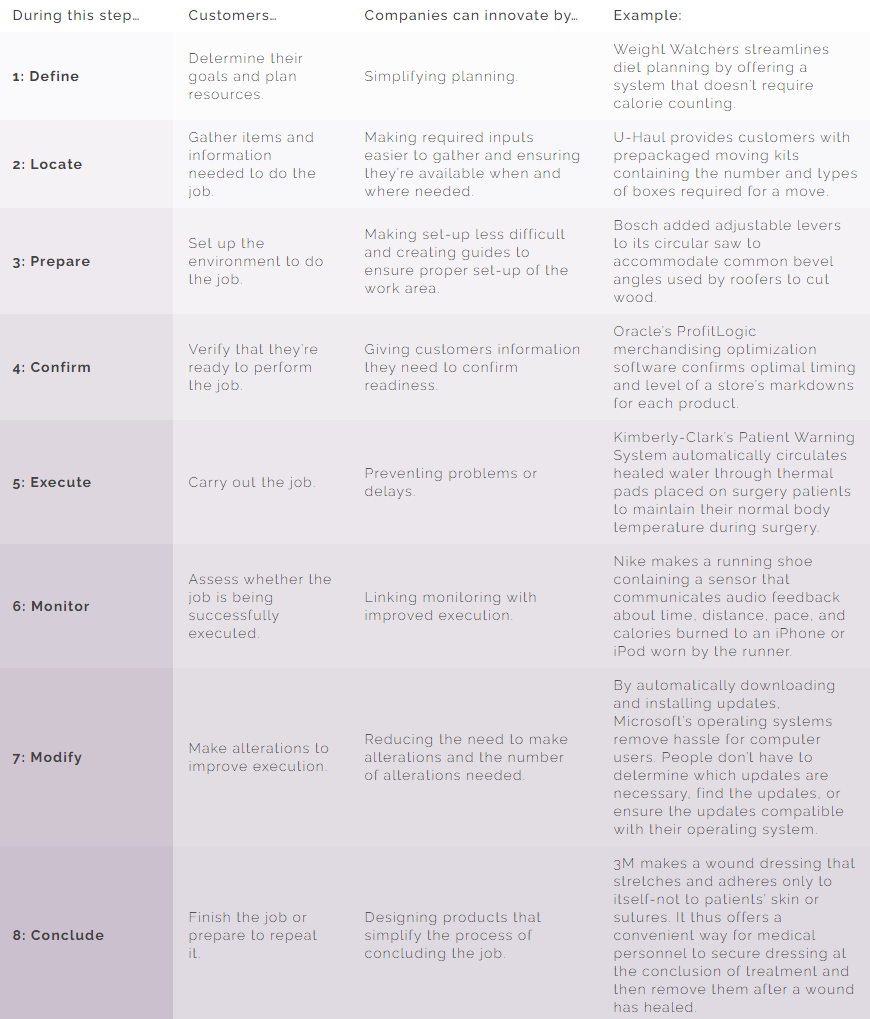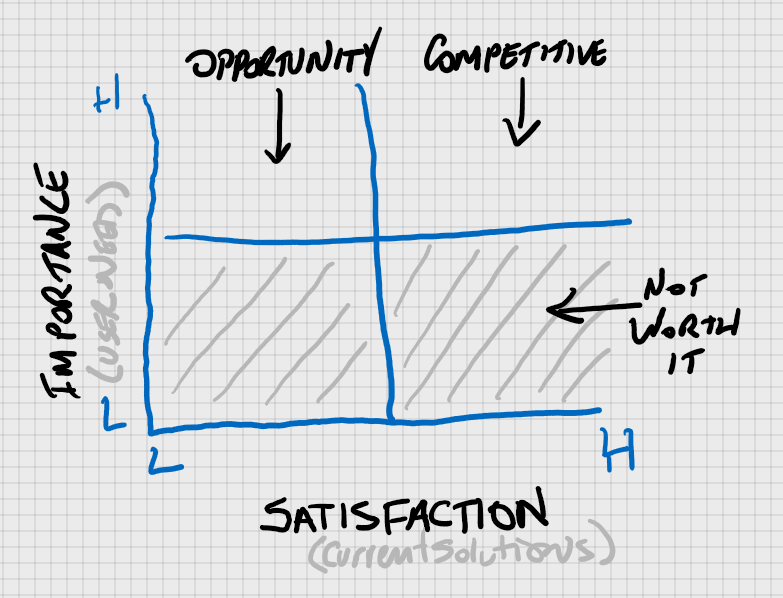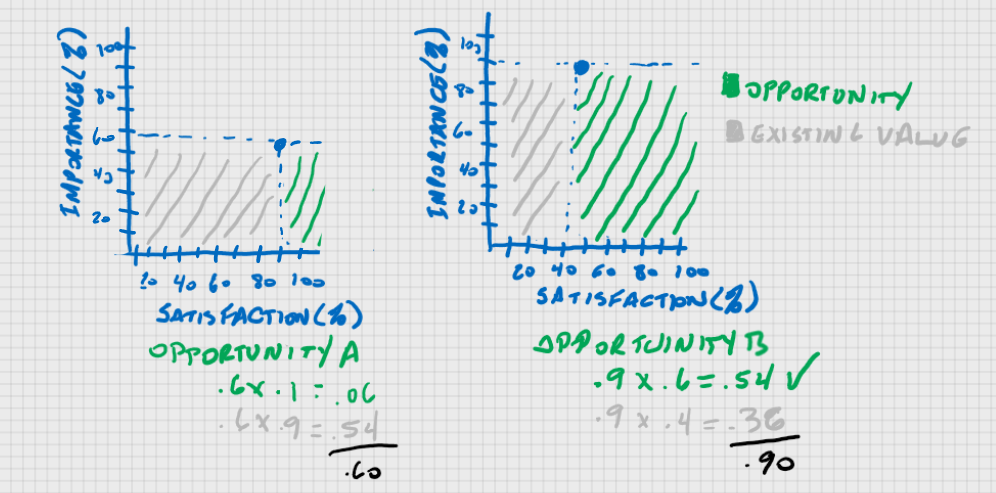Customer, Discovery, Problem
Discovery
The process to uncover/identify customer problems or pain points (“unfulfilled needs”).
- Unfulfilled needs, customer problems/pain points need to be understood before any consideration should be given to potential solutions
- Every problem/pain point needs to be validated:
- is the problem pervasive?
- do other customers have the same issue?
Relevant examples outside product management on importance of validation/learning from customer problems
- Video Clip - Tested - Adam Savage: The final cut of a pilot show only passingly resembles the original concept because of the many learnings and discoveries made during the development process. This fundamentally changes the ultimate outcome. Relevant section begins here at 4:03 and runs through ~4:55. There’s a little more context if you start video a bit earlier.
- Video Clip - WIRED: How Avengers: Endgame’s Visual Effects Were Made: - Jen Underderdahl - discussing early process to validate whether Thanos’s menacing subtlety and character could be digitally captured convincingly to carry the final 2 Avenger’s films. Starts here at 0:19 through 2:00
- Quote “No plan survives contact with the enemy” - Learnings from first contact must be understood, and plans need to be adapted/changed for a successful outcome
Jobs to be done (JTBD)
Summary: Customers “hire” a product to do a job => framework is used to systematically uncover/define customer needs which can then point to product opportunities. It reframes the process away from features and towards outcomes.
Premise: To understand what motivates people to act, you must first understand what it is they need to get done => listen to milkshake story - (Youtube link - as told by Clayton Christensen*).
Consider:
- What is the job the customer is looking to do & why?
- How is the customer currently performing this job?
- What jobs are the customers not doing?
Benefits:
- Focus is on value to customer, not customer profile
- main emphasis is on outcomes & needs
- …this is in preference to solutions
- Concentrates user research on what is done vs. what users say they do
- Helps to separate/ID “main job to be done” and related “jobs to be done” and to prioritize
Eight specific steps (click to view):*

References:
*Developed by Clayton Christensen
- First articulated in The Cause and the Cure of Marketing Malpractice.
From Tony Ulwick:
- https://strategyn.com/jobs-to-be-done/customer-centered-innovation-map/
- https://hbr.org/2008/05/the-customer-centered-innovation-map
- https://jobs-to-be-done.com/the-jobs-to-be-done-canvas-f3f784ad6270
Other references
- https://review.firstround.com/build-products-that-solve-real-problems-with-this-lightweight-jtbd-framework
- https://productfolio.com/jtbd/
- https://miro.com/templates/jobs-to-be-done-template/
- https://uxknowledgebase.com/jobs-to-be-done-d77e9e0d725c
Evaluating Opportunities:

Importance vs. Satisfaction
Comparing Opportunities:
